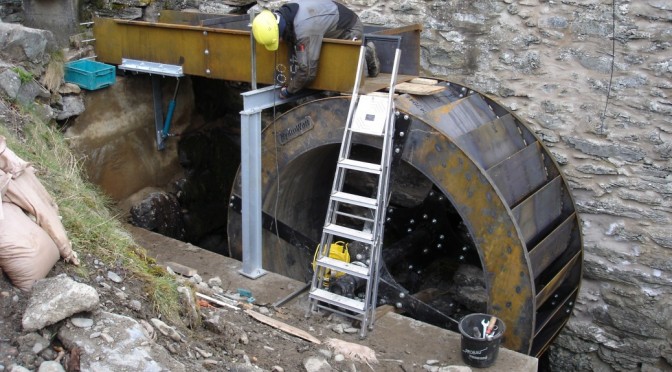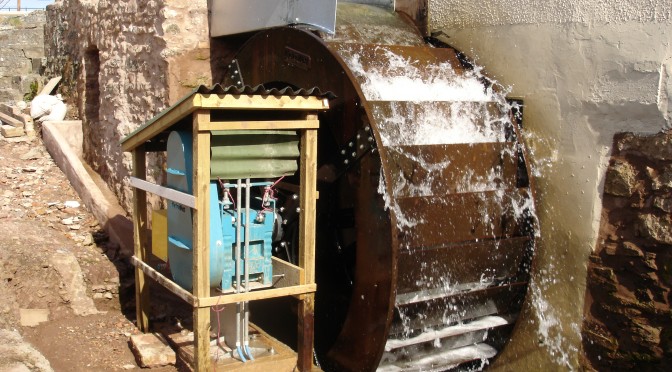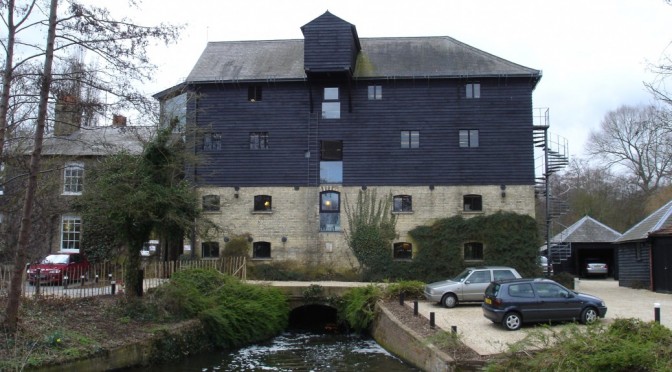| Hydromatch Consulting | Case Study 5 | Site Name: | Maerdy Mill |
| System type: | Overshot Waterwheel | Power output: | 4 kW |
| Manufacturer: | HydroWatt GmbH | Typical Generation: | 15 MWh p.a. |
| Client: | Environment Agency | Design Conditions: | H = 3.00 m Q = 0.20 m3/s |
| Location: | Maerdy, North Wales | Commissioned: | July 2008 |

Project description:
This site is owned by Natural Resources Wales (previously the Environment Agency Wales) and used as a salmon hatchery. There was keen interest from the fisheries team in harnessing the surplus flow of water in the former mill leat which now supplies the fish rearing tanks to offset the energy consumption at the site. As the site is often left unattended, it was important that a system was installed which could be relied upon to work with little supervision.
An overshot waterwheel was quickly identified as an appropriate solution which also made most sensible use of the existing infrastructure which was of course originally designed to incorporate a similar wheel.
The scheme required planning permission, Environment Agency licensing and CDM regulations to be precisely followed during the installation. Nevertheless, the project was successfully commissioned and handed over to the Environment Agency staff within 6 months of the contract being signed with Pico Energy Ltd.





